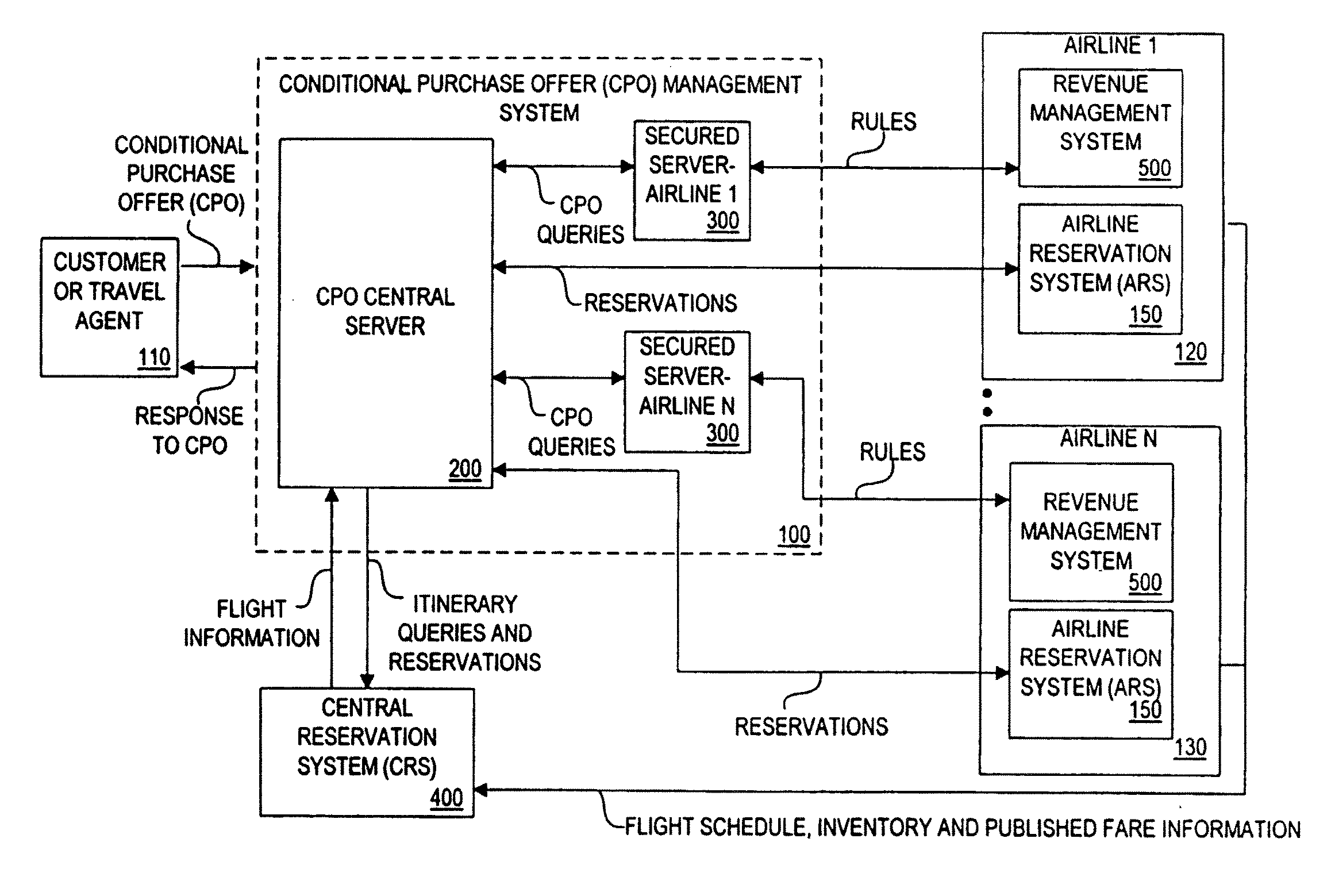Conditional Purchase Offer Management System
a technology of offer management and purchase, applied in the direction of credit schemes, instruments, marketing, etc., can solve the problems of unanticipated excess capacity, affecting the excess capacity of airlines, and the airline cannot simply discount the published fares for such unsold seats, so as to stimulate latent and unfulfilled leisure travel demand, and discourage utilization of this system
- Summary
- Abstract
- Description
- Claims
- Application Information
AI Technical Summary
Benefits of technology
Problems solved by technology
Method used
Image
Examples
Embodiment Construction
[0042]FIG. 1 shows a conditional purchase offer (CPO) management system 100 for receiving conditional purchase offers from one or more customers or travel agents 110, hereinafter referred to as customer 110, and for evaluating the received CPOs against a number of CPO rules defined by a plurality of sellers, such as airlines 120, 130, to determine whether any seller is willing to accept a given CPO. As discussed further below, if a seller accepts a given CPO, the CPO management system 100 binds the customer 110 on behalf of the accepting seller 130, to form a legally binding contract.
[0043]As used herein, a CPO is a binding offer containing one or more conditions submitted by a customer 110 for the purchase of an item, such as air travel, at a customer-defined price. In the illustrative airline embodiment, the customer-defined conditions would include itinerary parameters, such as the origin and destination cities; acceptable dates and times of departure and return; and whether conn...
PUM
 Login to View More
Login to View More Abstract
Description
Claims
Application Information
 Login to View More
Login to View More - R&D
- Intellectual Property
- Life Sciences
- Materials
- Tech Scout
- Unparalleled Data Quality
- Higher Quality Content
- 60% Fewer Hallucinations
Browse by: Latest US Patents, China's latest patents, Technical Efficacy Thesaurus, Application Domain, Technology Topic, Popular Technical Reports.
© 2025 PatSnap. All rights reserved.Legal|Privacy policy|Modern Slavery Act Transparency Statement|Sitemap|About US| Contact US: help@patsnap.com



